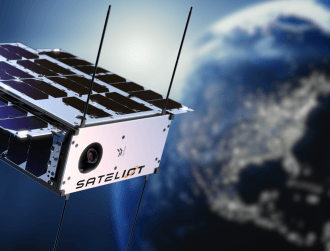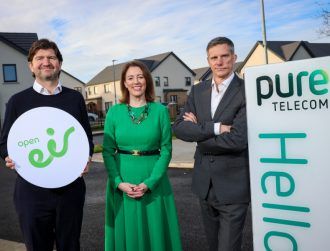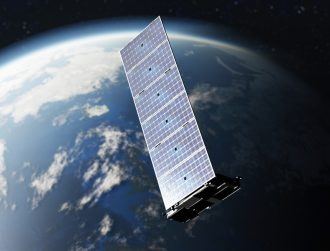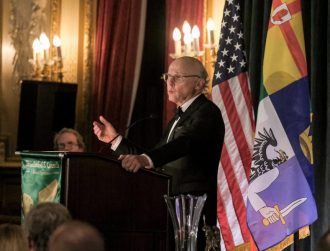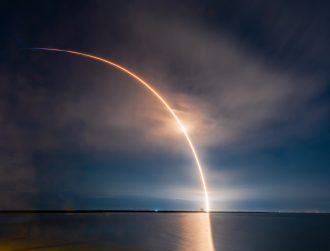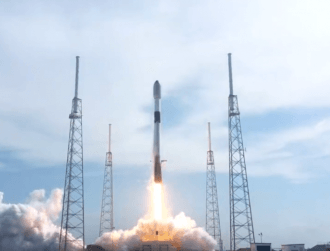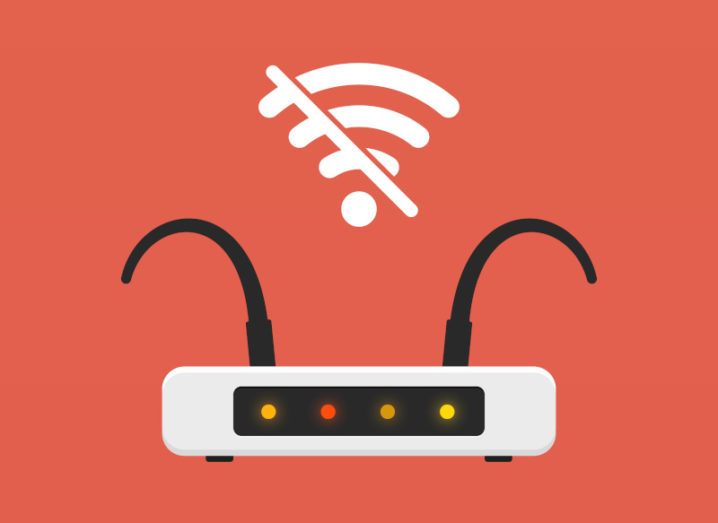
Image: © Oleg/Stock.adobe.com
Ireland’s National Broadband Plan aims to provide high-speed internet using fibre-optic technology to most parts of the country. But for those places too expensive to reach, the sky is not the limit thanks to services such as Elon Musk’s Starlink.
Satellite broadband, or internet access provided through geostationary satellites, is being considered as a feasible alternative for those parts of Ireland traditional providers are struggling to reach with fibre broadband.
Last week, the CEO of the National Space Centre urged the Government to consider providing grants and subsidies to some of those homes and businesses that will be left out of the plan.
“There will remain a ‘last mile’ segment for whom it is inefficient to serve via standard fibre networks, whether commercially or via State intervention,” Rory Fitzpatrick told an Oireachtas Committee responsible for the National Broadband Plan (NBP).
Fitzpatrick said that the challenge to put all consumers on an equal footing can be easily addressed by a grant subsidy for satellite services instead of infrastructure investment for outlying premises.
The NBP is a multibillion-euro plan to roll out fibre broadband to 540,000 homes and businesses over a seven-year period. The contract was awarded to National Broadband Ireland in 2019 after broadband companies Eir and Siro backed out. Remote working from rural areas as a result of the pandemic has led the Government to see the matter with renewed urgency.
Satellite broadband in Ireland
When it comes to high-speed satellite internet services, Ireland is soon to be spoilt for choice. Fitzpatrick told the committee that many lower-orbit satellite service companies such as UK-based Oneweb, Canada’s Telesat and US-based Amazon are soon to make their debuts in the Irish market.
But one satellite provider that has emerged as an early bird winner in Ireland is known for reaching for the stars. Starlink, a satellite internet constellation being constructed by Elon Musk’s aerospace company SpaceX, secured an agreement with Kerry County Council in December last year.
In Kerry, Starlink aims to deliver high-speed, low-latency broadband to people in rural areas such as the infamously isolated Black Valley. The region is noted for being one of the last places in mainland Ireland to be connected to electricity and telephone networks.
Because almost one-third of all Kerry premises reportedly have no access to high-speed broadband, the location is ideal for Musk’s Starlink project. The company has been rolling out a beta service in the US and international locations, and its Irish pilot project has seen residents in west Cork and Kerry trial the technology.
West Cork’s call for help
Campaigners in the dead zone Knockawaddra, west Cork, received a trial kit from Starlink following a direct appeal to Musk for help. Local business-owners Emma Fitzpatrick and Lesley Cox were offered a trial of the beta service for one month.
“We are hopeful that Starlink will solve our broadband problem in the short-term. In the longer-term, it is crucial that the National Broadband Ireland expedite the roll-out of fibre in our area. Rural communities are being failed by Government on access to broadband,” they said in a joint statement.
The connection problems in Knockawaddra came to a head during widespread Covid-19 restrictions, which saw these west Cork residents and many others struggling to conduct business and home-schooling online from home.
“The broadband speeds we currently have of 0.7Mbps were seriously letting us and the wider community down,” said Cox, who is a landscape artist and regularly needs to upload high-resolution images to her website. During the pandemic, she has also been hosting calls with galleries and clients over Zoom.
Her fellow campaigner Emma Fitzpatrick is a shiatsu practitioner and has been conducting online classes and sessions to keep her business going under Covid.
“None of this was possible with the poor and unstable broadband we currently have available,” said Cox.
SpaceX’s ambition is out of this world
Starlink’s global roll-out could cost as much as $30bn and it currently has 69,420 users worldwide, Musk told the Mobile World Congress in Barcelona last month. It is expected to reach half a million users over the next year.
To be a profitable enterprise, Musk said that the cost of manufacturing the terminal would have to be reduced. New users currently pay around $500 for a Starlink beta kit, which covers only half the manufacturing cost.
For consumers in rural Ireland not covered by the National Broadband Plan, incurring the additional costs of buying satellite services can be an unfair disadvantage. Under the suggestions of Fitzpatrick from the National Space Centre, grants and subsidies would help residents cover the cost.
Satellite internet is not the only thing on Musk’s agenda, however. Gwynne Shotwell, president and chief operating officer at SpaceX, said at a National Space Society event last month that SpaceX’s Starship programme is the company’s most exciting development from a “visionary space perspective”.
Starship’s ambitious programme aims to use SpaceX’s reusable space transportation system to “take people to other planets, the moon and Mars”. Shotwell said that July could be Starship’s debut orbital launch, while Musk said it could take months.
While SpaceX’s Starlink service may be the most practical development in the company in recent months for some, the thought of flying to the moon makes one hope. In other words, please be true.

